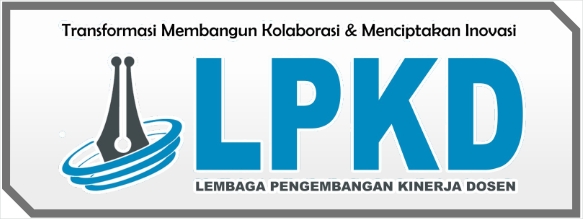Perceptions Of Cadets On Visual Cues And Astronomical Learning In Maritime Safety And Navigation
DOI:
https://doi.org/10.55606/jurribah.v3i1.2791Keywords:
Astronomical learning, Cadets learning, Maritime safety, Navigation, Visual cuesAbstract
This research explores the perceptions of 40 cadets at the Transportation Institute in Jakarta regarding the application of visual cues and astronomical learning in maritime safety and navigation. Through qualitative research methods, including interviews and observational techniques, the study examines cadets' proficiency in celestial navigation, their engagement with social media and citizen science initiatives related to astronomical learning, and their awareness of cultural differences in navigation practices. The findings reveal that cadets demonstrate a high level of proficiency in celestial navigation, indicating the effectiveness of the educational practices at the Transportation Institute. However, there is room for improvement in terms of leveraging social media for educational purposes and developing cross-cultural sensitivity among cadets. The research highlights the importance of integrating practical training, fostering cross-cultural competence, and promoting a culture of lifelong learning among cadets to ensure their preparedness for the modern maritime industry. The insights gained from this research can inform educational practices and professional development initiatives in the maritime sector.
References
Bee, M. (2017). A study into the professional identity of lecturers at a maritime education and training institute operating on the boundary of further and higher education. University of Southampton.
Cohn, A. B., & Dennis, J. M. (2013). 1055 Maritime Archaeology, the Dive Community, and Heritage Tourism. In B. Ford, D. L. Hamilton, & A. Catsambis (Eds.), The Oxford Handbook of Maritime Archaeology (p. 0). Oxford University Press. https://doi.org/10.1093/oxfordhb/9780199336005.013.0046
Eckenhoff, K., Geneva, P., & Huang, G. (2020). High-accuracy preintegration for visual-inertial navigation. Algorithmic Foundations of Robotics XII: Proceedings of the Twelfth Workshop on the Algorithmic Foundations of Robotics, 48–63.
Edirisinghe, P., Zhihong, J., & Lixin, S. (2016). The Direction of Maritime Education and Training development: A Conceptual Approach. Proceedings of the 1st International Conference on Maritime Education and Training, Dalian Maritime University, 15th October.
Fu, D., Xia, H., & Qiao, Y. (2021). Monocular visual-inertial navigation for dynamic environment. Remote Sensing, 13(9), 1610.
Gupta, S., Davidson, J., Levine, S., Sukthankar, R., & Malik, J. (2017). Cognitive mapping and planning for visual navigation. Proceedings of the IEEE Conference on Computer Vision and Pattern Recognition, 2616–2625.
Hänninen, M., Banda, O. A. V., & Kujala, P. (2014). Bayesian network model of maritime safety management. Expert Systems with Applications, 41(17), 7837–7846.
Huang, G. (2019). Visual-inertial navigation: A concise review. 2019 International Conference on Robotics and Automation (ICRA), 9572–9582.
Katz, J. (2015). A theory of qualitative methodology: The social system of analytic fieldwork. Méthod (e) s: African Review of Social Sciences Methodology, 1(1–2), 131–146.
Leung, T.-S., & Medioni, G. (2014). Visual navigation aid for the blind in dynamic environments. Proceedings of the IEEE Conference on Computer Vision and Pattern Recognition Workshops, 565–572.
Markopoulos, E., Lauronen, J., Luimula, M., Lehto, P., & Laukkanen, S. (2019). Maritime safety education with VR technology (MarSEVR). 2019 10th IEEE International Conference on Cognitive Infocommunications (CogInfoCom), 283–288.
Mazaheri, A., Montewka, J., & Kujala, P. (2014). Modeling the risk of ship grounding—a literature review from a risk management perspective. WMU Journal of Maritime Affairs, 13, 269–297.
Mori, Y., & Manuel, M. E. (2023). An Exploration of the Theoretical Foundations of Onboard Seafarer Training: A Systematic Review of the Literature. TransNav: International Journal on Marine Navigation & Safety of Sea Transportation, 17(4).
Padgett, D. K. (2016). Qualitative methods in social work research (Vol. 36). Sage publications.
Puisa, R., McNay, J., & Montewka, J. (2021). Maritime safety: prevention versus mitigation? Safety Science, 136, 105151.
Rahayu, R. P., & Wirza, Y. (2020). Teachers’ perception of online learning during pandemic COVID-19. Jurnal Penelitian Pendidikan, 20(3), 392–406. https://doi.org/10.17509/jpp.v20i3.29226
Svilicic, B., Kamahara, J., Rooks, M., & Yano, Y. (2019). Maritime cyber risk management: An experimental ship assessment. The Journal of Navigation, 72(5), 1108–1120.
Willig, C. (2014). Interpretation and analysis. The SAGE Handbook of Qualitative Data Analysis, 481.
Zhang, P., & Zhao, M. (2017). Maritime health of Chinese seafarers. Marine Policy, 83, 259–267.
Downloads
Published
How to Cite
Issue
Section
License
Copyright (c) 2024 Jurnal Riset Rumpun Ilmu Bahasa

This work is licensed under a Creative Commons Attribution-ShareAlike 4.0 International License.

















